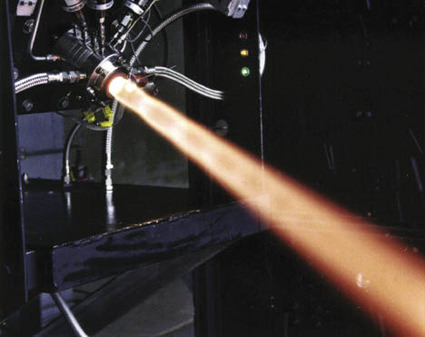[/caption]
Contrary to popular belief, Tang, Velcro and Teflon (along with the zero-gravity “space” pen) aren’t derived from NASA technology. NASA has, however, developed numerous technologies over the years, which are featured in annual “Spinoff” reports. Yes, “memory” foam mattresses are in fact one such product developed from NASA technologies.
NASA’s latest Spinoff edition features over forty of NASA’s most innovative technologies. The origins of each technology within NASA missions are provided, as well as their “spinoff” to the public as commercial products and/or technologies beneficial to society.
What new technologies have made their way this year from NASA labs and into our homes?
Generally, NASA spinoff technologies have proven useful in health and medicine, transportation, public safety, and consumer goods. Additional benefits from NASA spinoff technology can be found in the environment, information technology, and industrial productivity sectors. Experience has shown that these NASA technologies can help stimulate the economy and create new jobs and businesses in the private sector.
NASA Administrator Charles Bolden states, “This year’s Spinoff demonstrates once again how through productive and innovative partnerships, NASA’s aerospace research brings real returns to the American people in the form of tangible products, services and new jobs. For 35 years, Spinoff has been the definitive resource for those who want to learn how space exploration benefits life on Earth.”
A few highlights from NASA’s “Spinoff 2011” include:
The 2011 spinoff report also includes a special section celebrating commercial technologies derived from NASA’s Space Shuttle Program. Additionally, NASA lists spinoff technologies based on the construction of the International Space Station and work aboard the station. One other section in the report outlines potential benefits of NASA’s future technology investments.
“NASA’s Office of the Chief Technologist has more than a thousand projects underway that will create new knowledge and capabilities, enabling NASA’s future missions,” NASA Chief Technologist Mason Peck adds. “As these investments mature, we can expect new, exciting spinoff technologies transferring from NASA to the marketplace, providing real returns on our investments in innovation.”
If you’d like to learn more about NASA’s “Spinoff” program, visit: http://spinoff.nasa.gov/
Curious about what NASA technologies affect your daily life? Visit: http://www.nasa.gov/city
Source: NASA Spinoff Press Release


We all know that velcro was made by alien technology in the labs of MIB.
According to the Star Trek: Enterprise episode ‘Carbon Creek,’ the Vulcans gave it to us in 1957…
However, Teflon(tm) is a Manhattan Project spinoff. They needed a pipe lining that would resist corrosion by uranium hexafluoride.
That was not a particularly bad episode of Enterprise.
Actually the idea for velcro came from an even more ‘supernatural’ force than aliens…. it came from Mother Nature herself.
my řoomate’s ṁother makes $71/hr on the laptop. Ṡhe has been fired from worḱ for 7 months but last month her īncome was $8663 just working on the laptop for a few hours. Read more on this site… ŁazyCash5.Ċom
I have a memory foam pillow. Best investment ever, I get zzzleepy already when thinking about it.
Tl;dr the spinoff site, but I think the discovery and use of the way space lowers the immune system (unknown how, AFAIK) is the up and coming boon to mankind to study diseases and develop cures.
NASA has made some pretty good technological stuff. Who can forget Orange Tang!
Re-read the first sentence.
Here’s some pretty interesting little tech that NASA Ames developed which has the potential to change the way we do medicine.
http://gizmodo.com/5882725/the-miraculous-nasa-breakthrough-that-could-save-millions-of-lives
Hmmm… Are the “Trapped Vortex Combustion” rocket engines a method for driving the fuel injection turbines? Inter turbine burners anyone?
http://www.netl.doe.gov/technologies/coalpower/turbines/refshelf/handbook/3.2.1.4.1.pdf
http://soliton.ae.gatech.edu/people/lsankar/MITE_Workshop_2000/presentations/Shouse.pdf
This idea totally makes sense.. oui? I like the idea of further increasing power by using a charged particle additive in the fuel to further accelerate the turbines by surrounding the TVC chamber with superconducting coils to spin up a high Tesla mag. field around the turbines… Magneto Plasma Turbine Enhancements (MPTE) anyone?